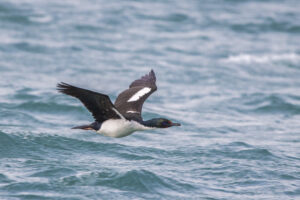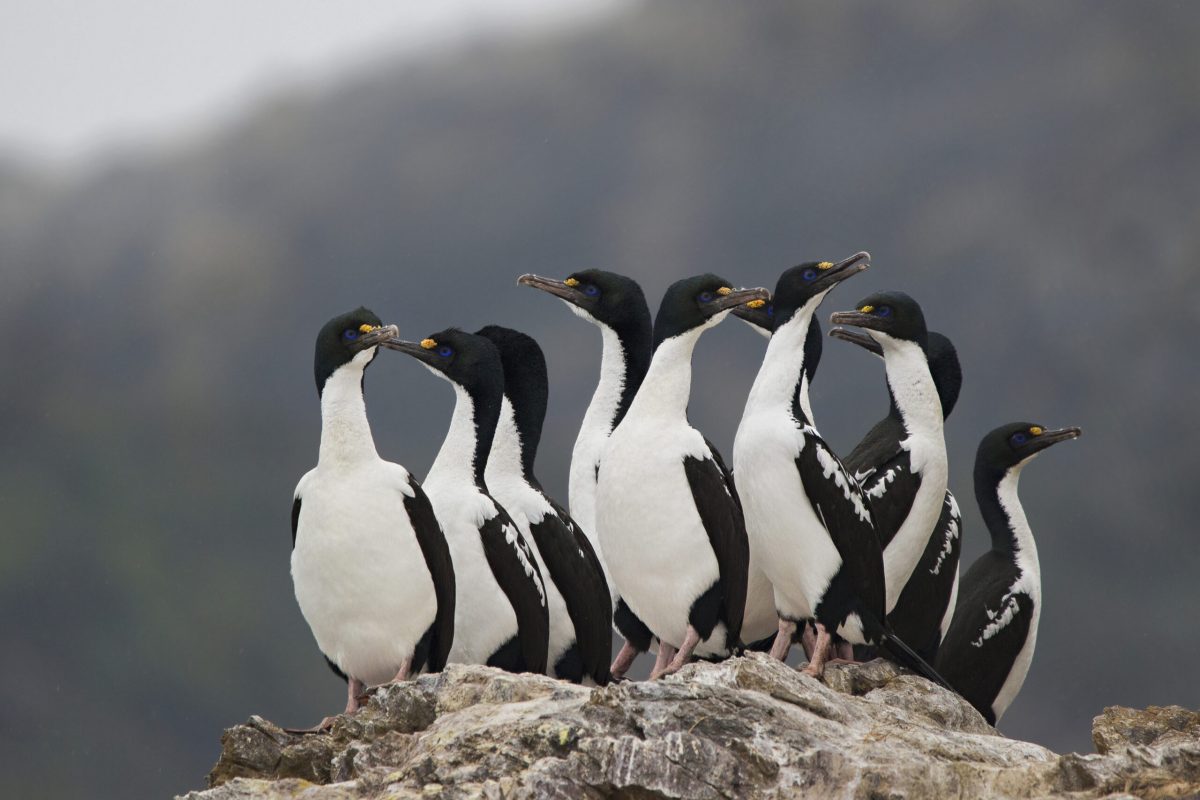The first snow had started to settle on the bare ground. Soon the shag will have to make a choice.
Should it stay to battle the elements and potentially face death during the long night, or attempt a perilous journey to find a new home? By the time sea-ice surrounds its craggy island, creeping up from the south like an army of white walkers, it may be too late.

Scientists know a lot about how the Ice Age affected animals in the landlocked Northern Hemisphere. Vast kilometre-high ice sheets covered large parts of Eurasia and North America. Animals migrated into refugia and when the ice finally released its cold grip on the world, they expanded back out again. It’s practically the plot of the Ice Age movies.
In contrast, we know a lot less about how animals responded in the vast Southern Ocean – the roaring forties, the furious fifties, and the screaming sixties – famous for that footage of the Whitbread Round the World yachts literally surfing down waves that fascinated me as a kid obsessed with sailing. By the time I got to visit the Southern Ocean on fieldwork, you couldn’t keep me off the ship’s deck in the wild weather we experienced. This ocean kingdom is vast, bordered by South Africa, Australia, Aotearoa New Zealand, and South America, and is dotted with isolated islands, with the frozen continent Antarctica at its heart.
During the height of the last Ice Age, the winter sea ice that surrounds Antarctica expanded out to encompass the majority of the high-latitude sub-Antarctic islands, with permanent glacial ice and snow covering some islands. How did animals respond to this brave new world where it’s not easy to just follow the herd into a refugial utopia. Should I stay or should I go? And once conditions improve, what next?
Most people would think toroa albatross and penguins are the quintessential birds of the Southern Ocean. But I’m talking about their lesser-known but equally majestic cousins, the kawau blue-eyed shags (Leucocarbo spp.). The New Zealand region (which encompasses our sub-Antarctic islands) is a global hotspot for shags. Of the 17 types of blue-eyed shag, we have eight of them. I’ve been fascinated with these charismatic flying bricks ever since I moved to Otago University nearly ten years ago. I can bike along the peninsula with the kids and see the Otago Shag (L. chalconotus) colony at Taiaroa Head, and find their ghostly bones in archaeological and fossil sites to reconstruct their biological heritage, and the impacts of humans and climate change.

Love or hate them, shags have a fascinating story to tell, especially blue-eyed ones. They are a paradoxical menagerie and who doesn’t like a mystery? On the one hand, they don’t like to travel long distances or disperse – the endangered King Shag (L. carunculatus) only forages up to 25 km from their colonies in Marlborough Sounds. The Otago and Foveaux Shag (L. stewarti) are only separated by 50-100 km of rough ocean at their closest point. On the other hand, different species and populations of blue-eyed shags are spread throughout the islands in the vast Southern Ocean – from South America to Antarctica and the high-latitude sub-Antarctic islands, all the way around to the New Zealand region. Fairly impressive for a bird that doesn’t like to travel far from home.
Now after nearly ten years of research (it’s really hard to get blue-eyed shag samples when their flashier cousins the penguins hog all the limelight…sorry penguins) our international team of shag fanatics has solved the mystery and managed to reconstruct the genetic whakapapa of the group back into the depths of time.
Most New Zealand birds can trace their ancestry back to Australia. New Zealand’s blue-eyed shags trace their whakapapa all the way back to South America, where the earliest members of this extended whanau, the Rock (L. magellanicus) and Guanay (L. bougainvillii) shags, still live today.
Around 2.5 million years ago at the start of the Pleistocene Ice Ages, blue-eyed shags expanded out of South America, around Antarctica, and into the New Zealand region, no doubt colonising most of the isolated landmasses in the Southern Ocean, some of them literally specs of rock, like the Bounty Islands near New Zealand.
But this newly formed kingdom was not to survive. Winter sea-ice and snow were on the march, and the long night was approaching. Safe in their glacial refugia, the tupuna of today’s Aotearoa blue-eyed shags rode out the repeated cold glacial and warm interglacial cycles in relative comfort, in time evolving into well-accepted species with a deep whakapapa. The same is true for those in South America.

However, it was a different story for blue-eyed shags in Antarctica and the high-latitude sub-Antarctic islands (think South Georgia, South Orkneys, Marion, Crozet, Kerguelen, Heard, and Macquarie). Snow and ice would have covered breeding colonies – these birds are highly prone to disturbance and need bare ground to breed – and sea-ice would have prevented in-shore foraging. Eventually, these isolated outposts would have been extirpated, wiping the evolutionary slate clean for thousands of years.
Recolonisation of these islands would only have been possible once climatic conditions improved and the armies of snow and ice retreated back to their Antarctic stronghold. We suspect these biological turnover events were repeated with every glacial-interglacial cycle right up to the present day – indeed, the evolutionary history of today’s blue-eyed shags in this region is probably at least four-fold shorter than those in New Zealand, with heated arguments among scientists as to whether these genetically and morphologically diverse birds constitute species, subspecies or populations.
But how did these homebody flying bricks make it all the way around the Southern Ocean? Paraphrasing David Quammen, in his fascinating book about island biogeography Song of the Dodo (thanks Robyn and Chris), he says the chances of colonising a new area in any given year is near impossible. Multiply that minuscule annual chance over eons and it’s inevitable. You can imagine scenarios where Southern Ocean storms occasionally blow even the most sedentary of birds all over the place, some of which survive when they come across a fortuitously placed island.
Far from playing second fiddle to penguins, blue-eyed shags have come of age, with their own fascinating story to tell. Rather than the bird some people love to hate, they can now proudly be thought of as the canary in the Southern Ocean coalmine or the Darwin’s finches of this vast ocean. Long live House Shag.
The featured image of King shags was provided courtesy of Oscar Thomas.

